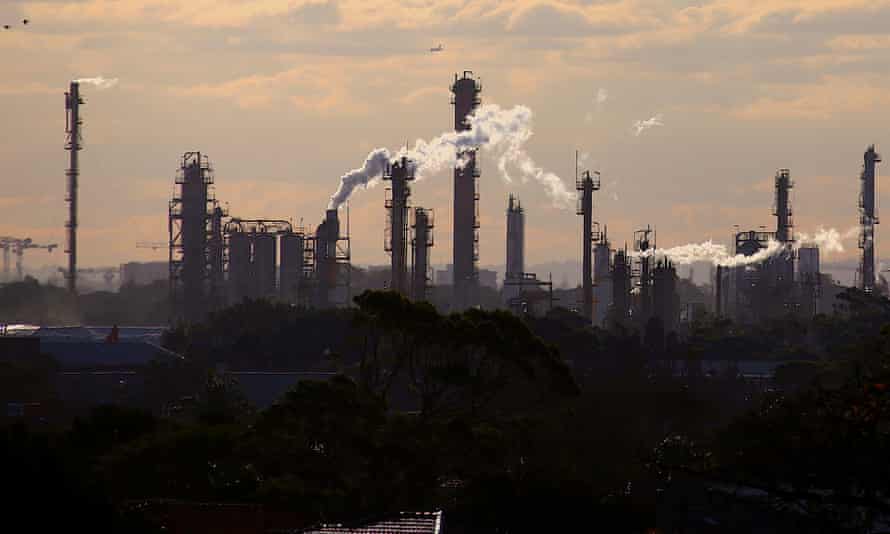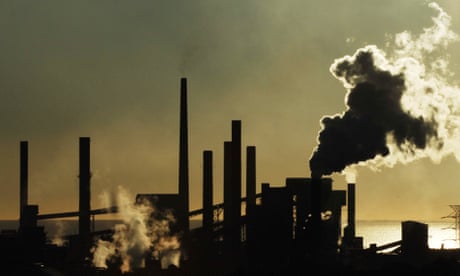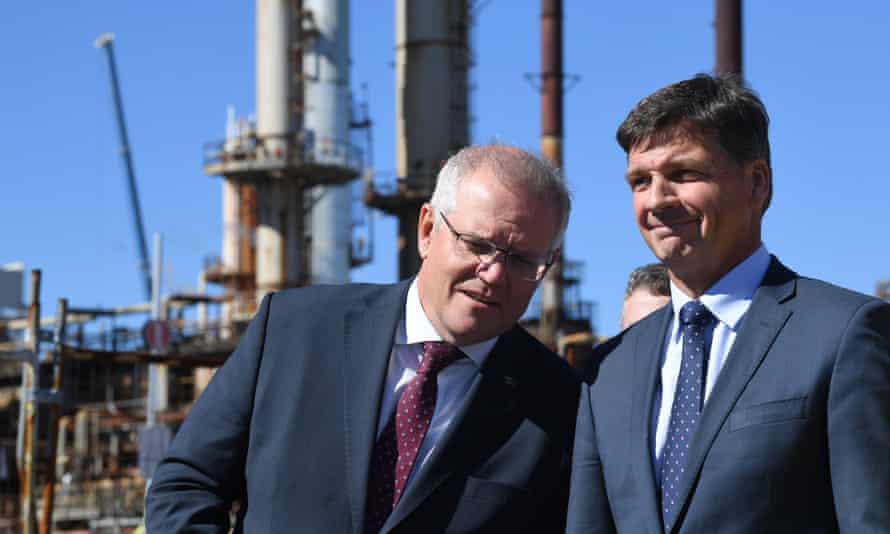Extract from The Guardian
As emissions from industrial sites increase, Grattan Institute recommends a new future fund be set up similar to the national green bank.

Last modified on Mon 23 Aug 2021 03.31 AEST
Greenhouse gas emissions from Australia’s industrial sites have risen 24% since 2005, and need to be addressed now if the country is to have a chance of reaching net zero by 2050, a new report says.
The Melbourne-based think tank Grattan Institute has released a blueprint to reduce emissions from major industry, citing government projections that without action they are expected to stay around current levels until 2030.
It recommends policy changes such as improving Australia’s failing “safeguard mechanism”, creating an “industrial transformation future fund” similar in design to the national green bank, and expanding state energy savings schemes.
The report found an economy-wide carbon price backed by support for technology development would be the most efficient way to cut emissions, but deemed this “politically out of reach” and focused on policies the institute believed could be introduced under either the Coalition or Labor.
It was released as the Morrison government invited industry to have its say on the design of a promised new “safeguard crediting mechanism”, which it says will help big energy-using businesses adopt new technologies to cut costs and emissions.
If successful, it could address criticisms of the operation of the safeguard mechanism, which was introduced under Tony Abbott to place a limit on industrial emissions, but that in practice has allowed companies to repeatedly increase pollution without penalty. Critics have expressed concern it could lead to big emitters receiving government handouts for little public benefit if not well designed.
The government allocated $279.9m in the May budget to the new mechanism.
The industrial sector, not counting electricity generation, is responsible for 31% of Australia’s emissions. That proportion has grown as annual industrial emissions leapt from 130m tonnes in 2005 to 162m tonnes in 2019.
The increase was mostly driven by an expansion of gas and coal exports. Government projections released in December suggested industrial emissions were expected to still be at about the 2019 level in 2030. Scientists, political leaders and diplomats have said global emissions need to be cut roughly in half by then for the world to be on track to meet the goals of the Paris agreement.

Tony Wood, Grattan Institute’s energy and climate change policy director, said every decision the industrial sector made would have repercussions on emissions lasting decades. Governments needed “to send the right signals”, he said.
“Current policies place little to no downward pressure on emissions, nor do they encourage development of new low-or-zero-emissions industrial capacity,” he said in the report.
“From now on, every decision to renew, refurbish or build an industrial asset potentially locks in emissions for the coming decades. Getting these decisions right will be critical for reaching net zero.”
The Grattan report broke down industrial emissions into three main groups – fugitive emissions that escape during fossil fuel extraction, emissions from burning coal, gas and petroleum products, and emissions released during chemical reactions in manufacturing plants.
While
Australia has thousands of industrial facilities, the overwhelming
majority of today’s industrial emissions are from 194 large facilities
covered by the safeguard mechanism.
The report recommended transforming the safeguard. It said companies should be set emissions limits – known as baselines – that reflected their current pollution, not inflated estimates of what it could be, and the baselines should be reduced over time consistent with emissions targets.
It said there should be no exemptions and any new facilities should be given baselines substantially lower than the current industry average. Companies should be financially rewarded for emitting below their baseline, but only if the baseline was challenging to meet based on current output, it said.
Taylor said in a statement on Sunday that the King review had recommended the government establish a system in which companies could receive carbon credits for emissions cuts below their baseline, and it would now start consultation with industry on how to best implement it and “maximise co-investment”.
The Grattan report also recommended the creation of a transformation future fund to offer loans for the replacement of industrial assets with low-emissions alternatives. The fund could be similar to the Clean Energy Finance Corporation, but would not be required to earn a return on loans and would draw on both government and private-sector money.
For small and medium-sized industrial facilities, it suggested expanding and coordinating existing state energy efficiency schemes, and encouraging use of instant asset write-off to replace older polluting technology with newer and cleaner versions. Wood said reaching net zero would require an “unprecedented pace of asset replacement and renewal, starting now”.
The Grattan report said there was significant economic opportunity for Australian industry if the country acted to expand the export of minerals critical in low-emissions technology. If the country maintained its current global market share, exports of copper, nickel, lithium, graphite and cobalt would by 2050 bring in double the revenue earned today through coal exports.
The Grattan Institute report is one of five the organisation is publishing before the Cop26 climate summit in Glasgow in November. A report on transport emissions in July recommended phasing out sales of new petrol and diesel cars by 2035 if Australia was to have any chance of reaching net zero by 2050. It said it could be achieved by gradually tightening a new emissions limit imposed on light vehicles, and suggesting getting rid of stamp duty for electric cars would cur their price by 6.5%.
Like industrial emissions, transport emissions have risen significantly since 2005, the benchmark year against which the Morrison government has pledged to cut emissions.
No comments:
Post a Comment